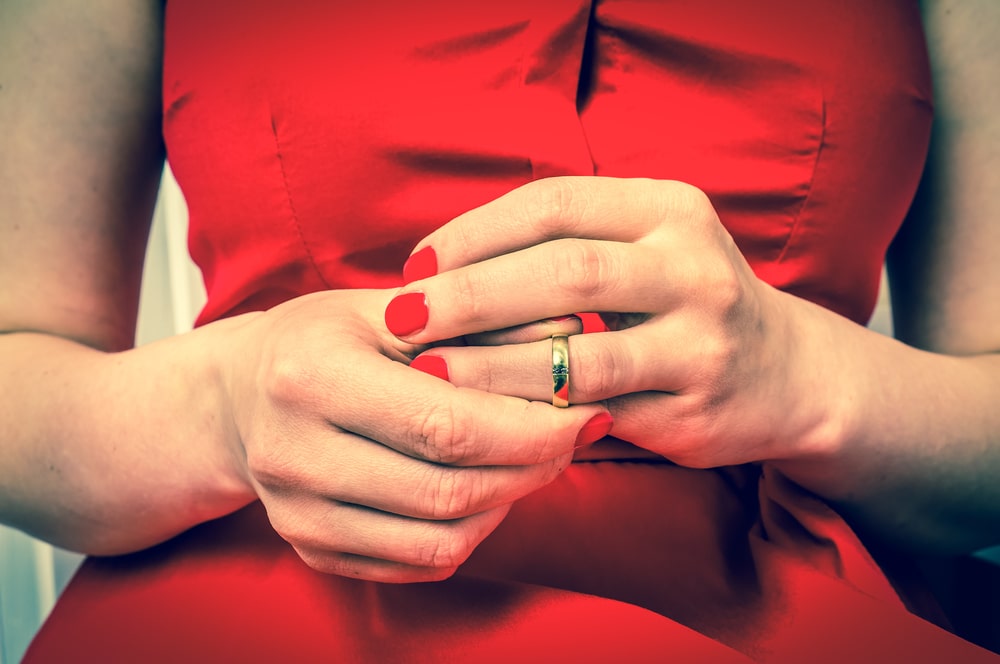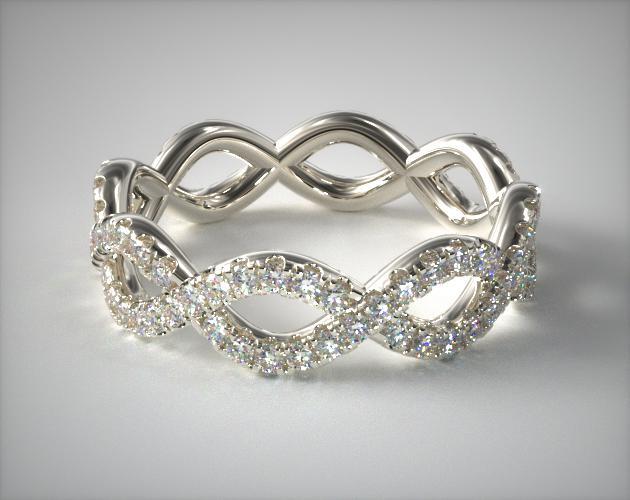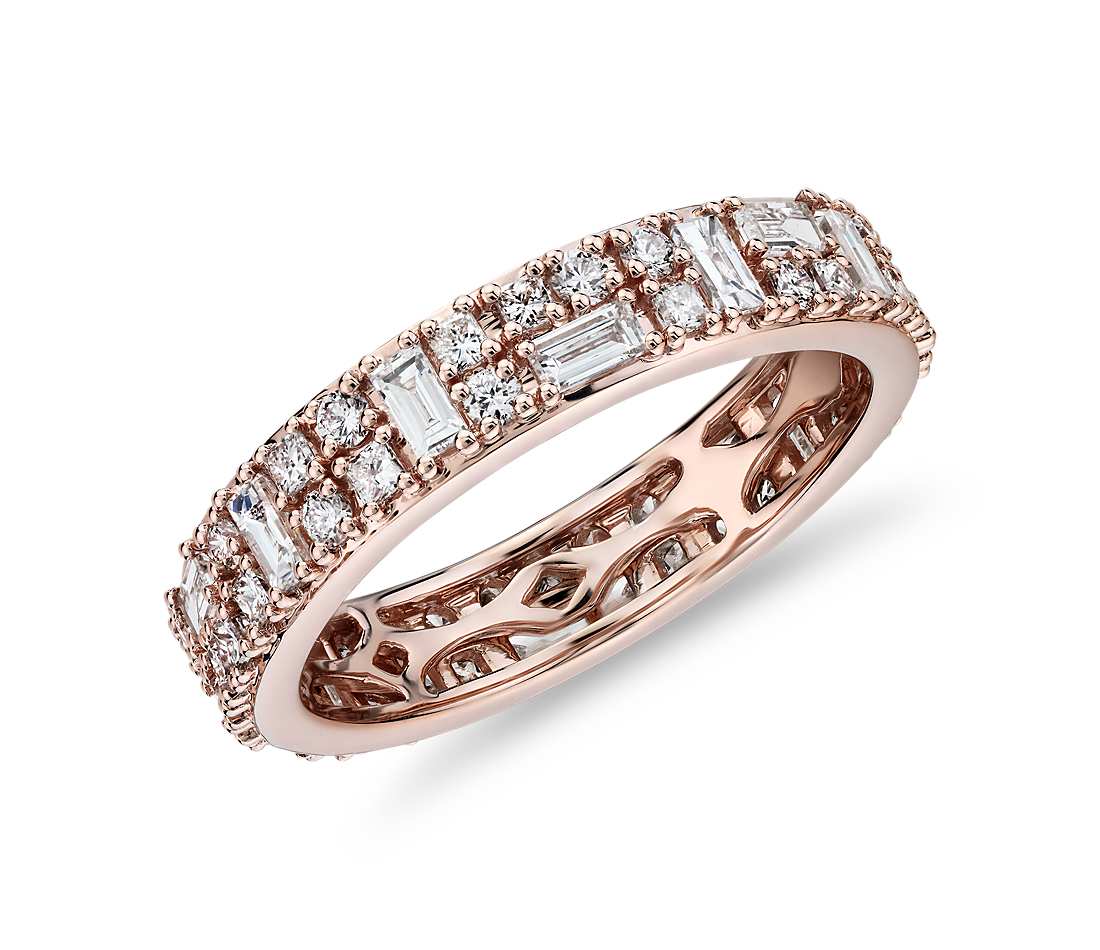
Table of Contents
As Jewelry Shopping Guide editors, we write about things that we love and we think you’ll like too. We often have affiliate partnerships, and may generate some revenue from these links at no cost to you.
Wedding bands come in a range of widths which can impact the comfort and look you’re going for. While some brides prefer a thin, barely-there feel, others like a wide chunky band to stand out on their finger.
Let’s take a look at what you need to know before you choose your wedding band width.
Types of Wedding Bands Relative Width

There are 7 standard categories for wedding bands depending on their width:
- Thin wedding bands – 1-2mm. Extra dainty and stylish, these are preferred by a lot of women who like petite and classy things or who simply have slim hands. 2mm is the standard choice here and anything approaching 1mm is dangerously thin as it can easily break. However, with stronger metals such as titanium or tungsten even that’s possible although not all jewelers would agree it’s a good idea.
- Spaghetti wedding bands – 3mm. This is one of the most popular choices for most women because it’s both stylish and durable. It goes well single-stone and solitaire settings and it works well with most engagement rings.
- Medium wedding bands – 4mm. The other highly popular option, 4mm bands are still not-too-thick and look great with most engagement rings. They are also a great option if you want a band that’s a size bigger from the start in order to avoid having to resize it in the future.
- Linguine wedding bands – 5mm. This is a more contemporary option that a lot of women also like. However, it can be a bit too thick for some.
- Fettuccine wedding bands – 6mm. The last of the “not yet officially thick” sizes, 6mm bands are also a very modern choice that some women love and others – not so much. They are thick enough to work well with a lot of designer styles and are an overall bold and robust choice. If you prefer more classy and dainty jewelry, this may not be for you.
- Wide wedding bands – 7-10mm. This category has traditionally been for men, but they’re becoming popular among women as a statement ring style.
- Extra wide wedding bands – 11-12mm or above. These are attention-getting widths that can be uncomfortable to wear if you’re not used to them.
What’s the standard wedding band width for women?



Wedding bands can range from as thin as 1mm to as wide as 15-20mm. However, these extremes are rarely used, and the most popular band widths are between 2mm and 6mm.
Within those, 3-4mm are the most common and arguably the most practical choices as they are still thin enough to be elegant and classy, but they are also sufficiently strong to last you a lifetime with proper care.
A wedding band for a woman is considered wide if it’s over 6mm. These fall into the realm of statement wedding rings and are ideal if you like something unique and non-traditional.
What Wedding Ring Width Should I Choose?
If you do want to go for less than 3mm you’d do well to choose an extra tough metal that will have better chances of surviving the wear and tear that are going to come its way as well as the inevitable hits and knocks.
If, on the other hand, you want to go for something wider like 7mm or above, you’ll need to make sure that width and style are going to look good with your engagement ring and will be something you’ll enjoy. Thicker rings are thought of as “uncomfortable” by a lot of people even though that’s not necessarily the case – they just have more surface area and touch more of the wearer’s skin.
One additional tip for bands wider than 6-7mm is to have them made 1 half size bigger than what you’d normally wear as that’d make the ring easier to go through the knuckles and more comfortable to wear.
What materials should the wedding band be made out of?

In general, most wedding bands for women are made of precious metals – platinum, palladium or gold. These are all durable enough for your wedding band but note that thinner bands should be made of harder metals, to improve longevity.
Different metals have different hardness which is typically measured on the Mohs scale of hardness that goes from 1 to 10. On it, diamonds are 10/10 as they are the hardest natural element. Gold, on the other hand, is quite soft – 3 out of 10, but when alloyed with other metals, it becomes durable enough for daily wear. The lower the karatage of gold, the more durable it is, meaning that a 14k gold ring will be harder than an 18k gold ring.
Platinum sits at 4.5/10 on the Mohs scale which is considerably harder and is more suitable for thinner bands. It still pales in comparison with titanium 6/10 or tungsten which sits on the impressive 8-8.5/10 that’s so hard that it’s nearly impossible to resize.
What to consider before choosing your wedding band width?

So, now that we know what our options are, how should you choose the right wedding band width? Well, here are the main factors to consider before purchasing anything:
- If your fingers and hands are overly slim, you’ll probably prefer a thinner ring.
- If you like classically stylish and dainty jewelry, thinner will be the way to go again.
- If you work with your hands a lot, choosing a medium thickness of 4 or up to 6 millimeters is advisable. Here we’re talking about anything from administrators and bartenders/waitresses to nurses and doctors.
- If you take your ring off while working, then it doesn’t matter what your occupation is.
- If you’re more of a contemporary person who rejects most classical styles and types of jewelry, a thicker wedding band will likely suit you better. Many unconventional brides go for 7-8mm or up to 10mm as this gives them a unique look as well as the opportunity to engrave their rings with something more complex and special.
- If you want your wedding bands to be identical the 6-8mm range is where men and women typically overlap.
- What materials would you like? If you want a thin, gold ring then you’ll need to discuss it with your jeweler. Our recommendation is to go for lower karat gold, 14k instead of 18k, for example, as those are harder. Also, rose gold is harder than white and yellow gold because of the copper in its alloy so keep that in mind as well.









